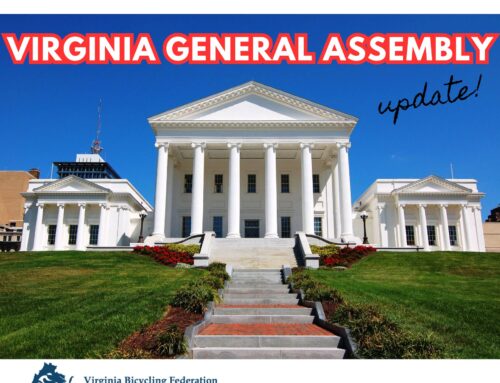The Virginia Department of Transportation (VDOT) is presently studying a replacement for its Robert O. Norris Jr. Bridge, which carries Virginia Route 3 across the lower Rappahannock River between Middlesex County (on Virginia’s Middle Peninsula) and Lancaster County (on Virginia’s Northern Neck) (click here for a map of the area).
Middlesex and Lancaster Counties are both lightly populated and delightful road-cycling destinations. The combined population of the two counties was only 21,544 in the 2020 U.S. Census.
On March 19, 2024, VDOT held a Citizen Information Meeting to brief the public on the current status of this project and to solicit public input. Newspaper coverage of the meeting is posted here and here.
The public comment period for this preliminary meeting will remain open ONLY through Friday, March 29, 2024.
Documents related to this Citizen Information Meeting included:
- A newspaper advertisement;
- A PowerPoint presentation;
- A meeting brochure;
- A public comment sheet; and
- An online public survey form.
Key facts about this project:
1) The Norris Bridge replacement had been planned for advertisement in Fiscal Year 2036, based on the allocated special structures funds in the Commonwealth Transportation Board’s approved 50-year Special Structures Program Fund plan (covering 25 structures statewide), but VDOT is now seeking federal funds to advance the project schedule.
2) $14.9 million is currently allocated for preliminary engineering and to prepare an environmental document, and those activities are now underway.
3) VDOT’s current minimum design standards for the replacement bridge call for:
- Two 12-foot wide travel lanes
- Two 4-foot wide shoulders, one on each side
- A 42-inch bridge rail height
- A concrete structure (not a truss bridge)
By contrast, the present bridge has only two adjacent 11-foot travel lanes, no functional shoulders, a lower rail height, and a 45 MPH posted speed limit.
4) The bridge served an average of 7,560 daily trips in 2022, and its replacement will be designed for an estimated 11,500 daily trips by 2050.
5) A public hearing for the draft environmental document is anticipated for Fall 2024.
6) VDOT’s Design Public Hearing for the replacement bridge would follow some months later.
7) The public comment sheet for the March 19 meeting includes at least three questions relevant to pedestrian and bicycle access:
2. Please share any comments on your experience crossing the existing Norris Bridge, and any concerns you may have related to traffic congestion, safety, the environment, pedestrian and bicyclist access, or other topics:
3. What features would you like to see on a replacement Norris Bridge?
4. Would you be interested in traveling on a bicycle on the replacement Norris Bridge?
8) At nearly 10,000 feet in length, the Norris Bridge is about 1000 feet longer than both San Francisco’s Golden Gate Bridge and Maryland’s old Nice/Middleton (Route 301) Bridge across the Potomac River.
9) The existing bridge is already 67 years ago, and the replacement bridge could be in place for a century or longer.
10) More information about this project, a link to the online public survey, and instructions for submitting written comments can be found on the VDOT webpage for the Robert O. Norris Bridge Replacement Project.
Although this project is still at an early stage of development, interested bicyclists and pedestrians from across Virginia (and beyond) should speak out now to request access for bicyclists and/or pedestrians on any replacement bridge. Completing VDOT’s online public survey for the Norris Bridge Replacement Project may be the easiest and quickest way to do that now.
A barrier-separated shared-use path could provide the greatest and most equitable pedestrian and bicycle access; however, traffic-tolerant adult bicycle riders, who are most likely to undertake a 2-mile bridge crossing, might be reasonably accommodated on a bridge deck with dual paved shoulders–at least six or eight feet wide–that would also provide space for disabled motor vehicles.
A bridge deck wider than VDOT’s current 32-foot minimally acceptable deck width would improve safety and comfort for motorists, provide space for disabled vehicles, enhance emergency responses, and even facilitate bridge maintenance. Moreover, designing the replacement bridge to accommodate bicycling and/or walking could enhance economic development and tourism in Lancaster and Middlesex Counties.




Leave A Comment